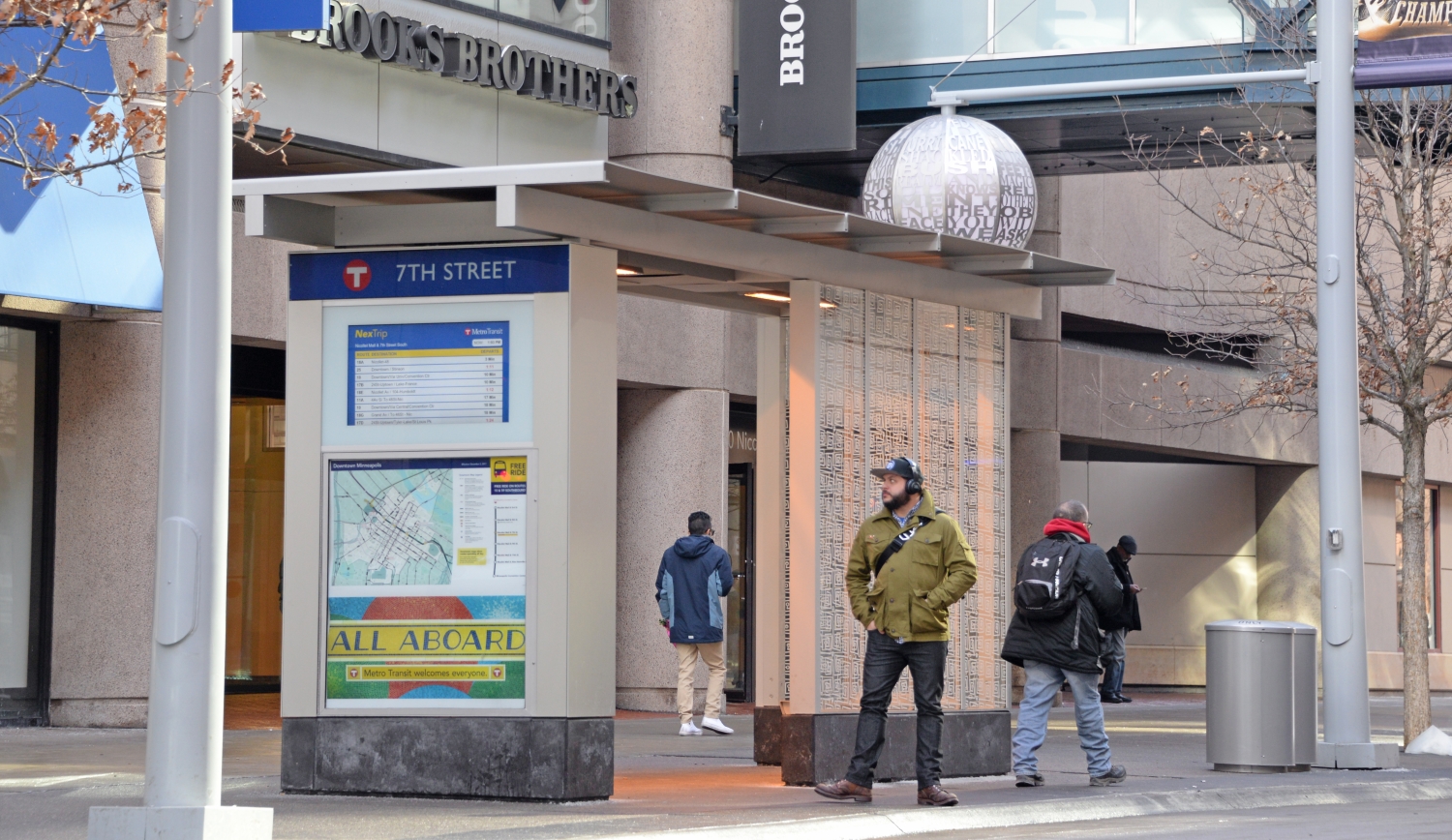
From General Manager Brian Lamb
A little over three years ago, we committed to providing customers a better experience at the bus stop.
Since then, we’ve installed shelters at nearly 200 locations, primarily in Minneapolis and St. Paul, where they either didn’t exist or needed to be replaced. Light and on-demand heaters have been included at many of these sites.
Some of the region’s busiest boarding locations have also been improved. A dozen shelters with heat, light and real-time signs were installed along Nicollet Mall last month and a rapid bus-style shelter was recently built at Lake Street and Hiawatha Avenue.
Concrete pads that improve accessibility were also put in at more than two-dozen sites last year in a continued effort to make it easier for everyone to get around bus stops.
And more improvements are on the way.
As many as 80 more shelters will be installed this year, more than half of which will be at sites where there currently isn’t any protection from the elements. These plans also include replacing aged shelters that had previously been privately-owned and maintained.
Next month, construction will begin on the region’s second rapid bus line, the C Line, which will bring two-dozen stations with shelters, real-time signs, security features and ticket vending machines to a corridor now served by Route 19. Similar plans are being made for the Route 5 corridor.
Later this year, customers will also see newly-designed shelter schedules that provide clearer information and real-time signs at some shelter sites.
Perhaps just a significant as these improvements, though, is the accompanying effort that’s been made, in partnership with several community partners and customers, to think about future bus stop investments.
Assuming customers with less frequent service had longer waits, we’d used guidelines that led shelters to be placed in some suburban locations where we served relatively few customers.
After receiving community feedback and reviewing wait time data we recently revised those guidelines. Under the new guidelines, shelters will be considered at any site where there are more than 30 boardings a day, with a priority on sites that have more than 100 daily boardings.
The guidelines also place a higher priority on locations that serve people with disabilities, older adults and those who are less likely to own a vehicle. Transfer points and boarding locations near healthcare or social service centers will also get greater consideration.
The new criteria are a clear demonstration of how equity, defined as equal access to opportunity for all, is guiding our work.
As always, we want to hear about your bus stop experience and what you think can be done to make it even better. Please contact Customer Relations to share your thoughts.
Learn more about bus stop improvements
Better Bus Stops
Map: Review recent and planned bus stop improvements
Guidelines for placing and removing waiting shelters
Using community wisdom to design Better Bus Stops
Do bus stop amenities like shelters and benches make waiting for the bus more tolerable? Research from the University of Minnesota's Center for Transportation Studies suggests that yes, they do.